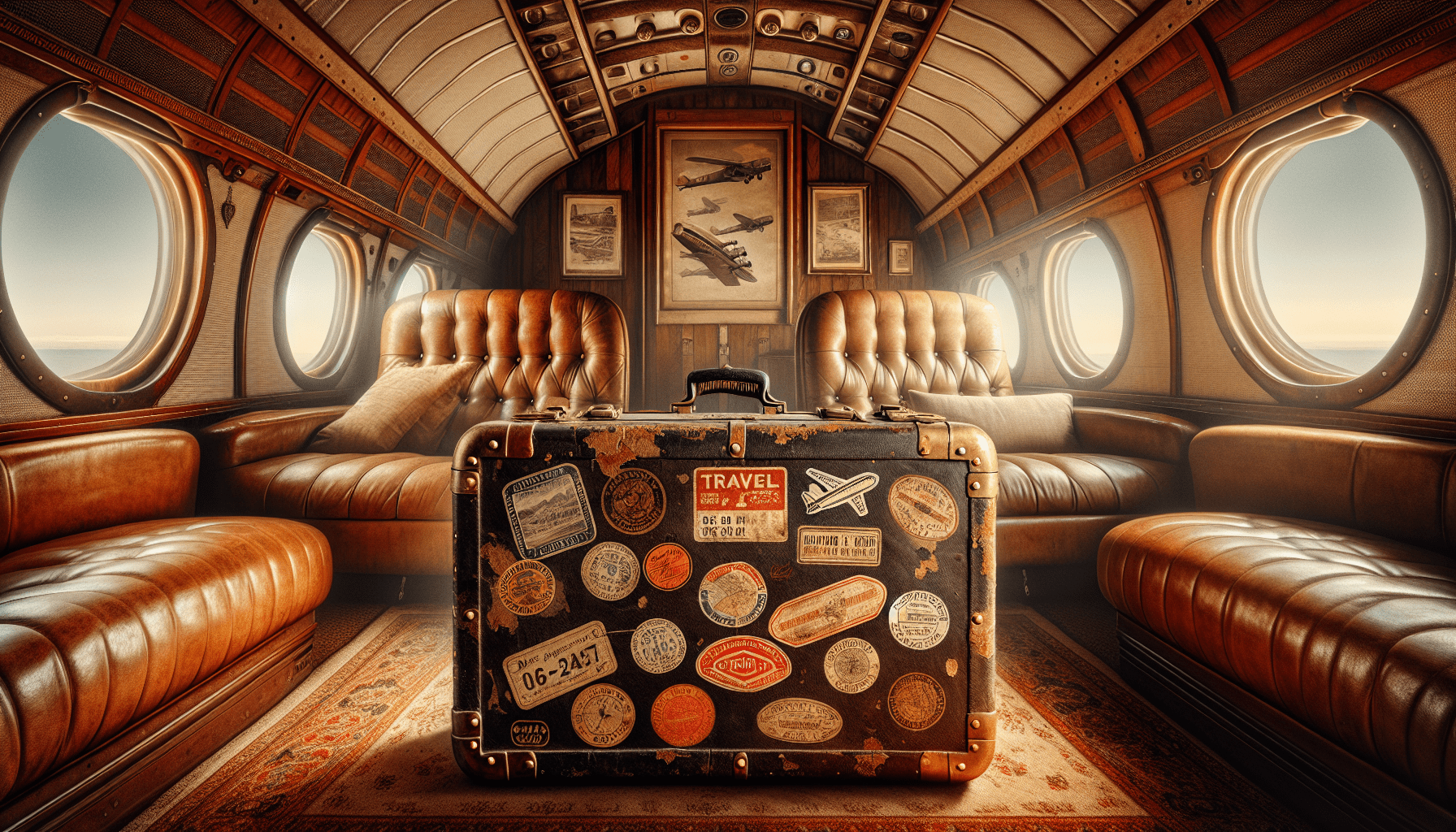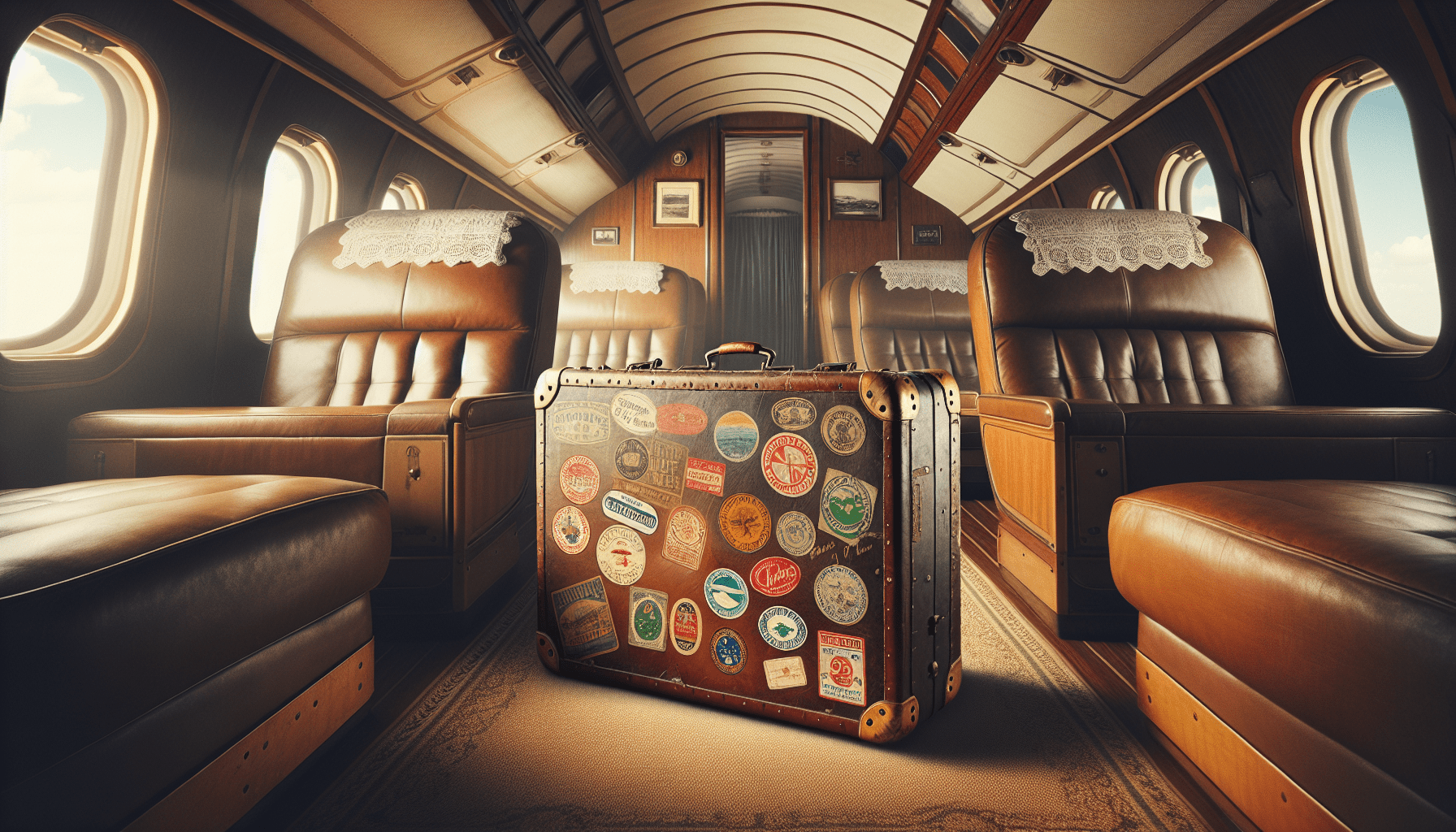BAGSMART Clear Toiletry Bag, 2 Packs TSA Approved Water resistant Quart Size Travel Organizer, Airport Airline Travel Essential Carry On Makeup Cosmetic Bags for Women, Black
$7.59 (as of April 24, 2025 06:56 GMT +00:00 - More info)Have you ever wondered how air travel evolved from a luxurious novelty to the everyday activity it is today? The transformation of air travel is a fascinating journey, especially considering how early 20th-century flights presented an entirely different experience. Let’s embark on a detailed exploration of this evolution and peek into the luxurious experiences that characterized early flights. Additionally, we’ll traverse the histories of specific airports that contributed to making air travel what it is today.

Shop These Accessories for a Comfortable Trip
Evolution of Air Travel
The Luxuries of Early 20th-Century Flights
Back in the early 1900s, flying was not just a means of transport; it was an extraordinary luxury. Unlike modern flights, cramped with compact seating, those initial flights were more akin to lounging in a hotel. Plush leather seats, fine dining, and personalized service were standard offerings. Imagine sipping on high-quality champagne while fluffy clouds floated by the panoramic windows.
The exclusivity was not just about comfort but about societal status. Only the affluent could afford to fly, turning the skies into the playground of the elite. This meant fewer passengers, more personal space, and unprecedented attention to detail. Certainly a far cry from today’s budget airline rush!
Impact on Mail Delivery and Travel
The development of air transit didn’t just benefit travelers. It brought about a revolution in mail delivery. Previously, critical correspondence and packages would take weeks, if not months, to reach their destinations via sea and rail. With the advent of air travel, the same mail could be delivered in a matter of days. This leap in efficiency fostered better communication, which in turn influenced trade and personal connections worldwide.
Minneapolis-St. Paul International Airport (MSP)
Origin: From Speedway to Airport
Minneapolis-St. Paul International Airport, known as MSP, didn’t start as an airport. Back in 1920, it was Snelling Speedway, a place for roaring engines and speeding vehicles. However, by 1926, MSP began its transformation when it became operational for mail delivery purposes. By 1948, it had grown and was renamed to reflect its expanding significance.
MSP Today
Fast forward to 2023, and MSP handled nearly 35 million passengers, marking its place as a key player in modern air travel. The sprawling airport blends its rich history with state-of-the-art facilities, offering a range of services to cater to the needs of today’s travelers.
Sydney Kingsford Smith International Airport
Origin: From Bull Paddock to International Gateway
Sydney Kingsford Smith International Airport’s beginnings couldn’t be more humble. Established in 1920, it was originally a bull paddock. Over the years, significant developments followed, starting with runway constructions in 1933 and the opening of a new terminal in 1970.
Current Ownership and Usage
In 2002, the airport transitioned to private management, bringing in a wave of modernization. Impressively, by the first quarter of 2024, the airport had served 10 million passengers, a testament to its pivotal role in connecting Australia to the rest of the world.

Shop These Accessories for a Comfortable Trip
Paris Le-Bourget Airport
Origin: From Wartime Airfield to International Hub
Paris Le-Bourget Airport has a storied origin, starting as a wartime airfield in 1914. By 1919, it gained official status as an airport and swiftly became a cornerstone of French aviation history. It was at Le-Bourget that Charles Lindbergh famously landed in 1927 after his nonstop transatlantic flight.
The Lindbergh Legacy and Post-WWII Expansion
Lindbergh’s landing placed Le Bourget firmly on the map, symbolizing the dawn of a new era in aviation. Pre-WWII expansions set the stage for its development, although the airport has since adapted to changes, maintaining its historic charm while embracing modern advancements.
Rome Ciampino Airport
Origin: A Military Foundation
Rome Ciampino Airport started in 1916 as a military airfield. Its strategic importance during wars cannot be overstated. By 1947, it transitioned into a commercial airport, signaling a new chapter in its history.
Modern-Day Use
Today, Ciampino is known for serving low-cost and general aviation. It’s fascinating how a site with such deep military roots has expanded to accommodate budget-conscious travelers, reflecting the democratization of air travel.
Amsterdam Airport Schiphol
Origin: From Military Base to Civil Aviation
Established in 1916 primarily for military purposes, Amsterdam Airport Schiphol started another chapter in 1920 by welcoming its first civil flight. Post-WWII rebuilding efforts were crucial in shaping the Schiphol we know today.
Current Status: A European Powerhouse
Schiphol ranks as the third busiest airport in Europe. It’s a significant hub for KLM and the SkyTeam alliance, reflecting its importance in global air travel. The airport effectively marries its historical essence with top-tier modern facilities, offering an unparalleled experience to its visitors.
Don Mueang International Airport
Origin: Thailand’s Second Airport
Inaugurated in 1914, Don Mueang International Airport holds the title of Thailand’s second airport. Initially focused on military operations, it commenced commercial flights in 1924.
Post-2006 Usage
Since Suvarnabhumi International Airport opened in 2006, Don Mueang has transitioned into a main domestic hub. It’s a great example of how airports evolve over time to serve changing travel needs.
Bremen Airport
Origin: From Airships to Commercial Flights
Founded in 1913 with a focus on airships, Bremen Airport’s history is unique. This initial focus shifted in 1920 when it began facilitating commercial flights.
Post-WWII Developments and Current Role
After being rebuilt post-WWII, Bremen Airport went on to house Airbus manufacturing facilities, blending its civil aviation role with a significant aerospace industry presence.
Conclusion
The story of air travel’s evolution isn’t just about technological advancements but also a reflection of societal changes. From the luxurious and exclusive early flights to the bustling hubs serving millions of passengers today, each airport we discussed has its unique history and significance.
Here’s a brief recap in a tabular form for easier understanding:
| Airport | Initial Use | Key Developments | Current Role |
|---|---|---|---|
| MSP | Speedway | Mail operations (1926), renamed (1948) | Served 35 million passengers (2023) |
| Sydney Kingsford Smith | Bull paddock | Runways (1933), new terminal (1970) | Privately managed, 10m passengers (Q1 2024) |
| Paris Le-Bourget | Wartime airfield | Lindbergh landing (1927), pre-WWII expansions | Historic charm with modern facilities |
| Rome Ciampino | Military airfield | Commercial operations (1947) | Low-cost and general aviation |
| Amsterdam Schiphol | Military base | First civil flight (1920), post-WWII rebuilding | Third busiest in Europe |
| Don Mueang | Military airport | Commercial flights (1924) | Main domestic hub post-2006 |
| Bremen | Airships | Transitioned to commercial flights (1920) | Airbus manufacturing facilities |
It’s amazing how these once modest or specialized airfields have transformed into major influences in air travel. Each has intricately woven its unique origin story with the broader narrative of aviation development. They stand as testaments to ongoing advancements, illustrating how far air travel has come and hinting at the exciting future still ahead.
Shop These Accessories for a Comfortable Trip






